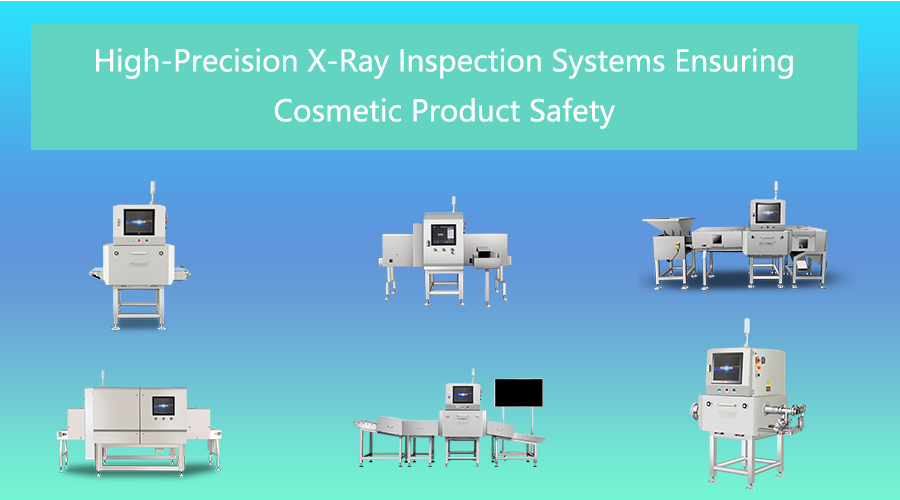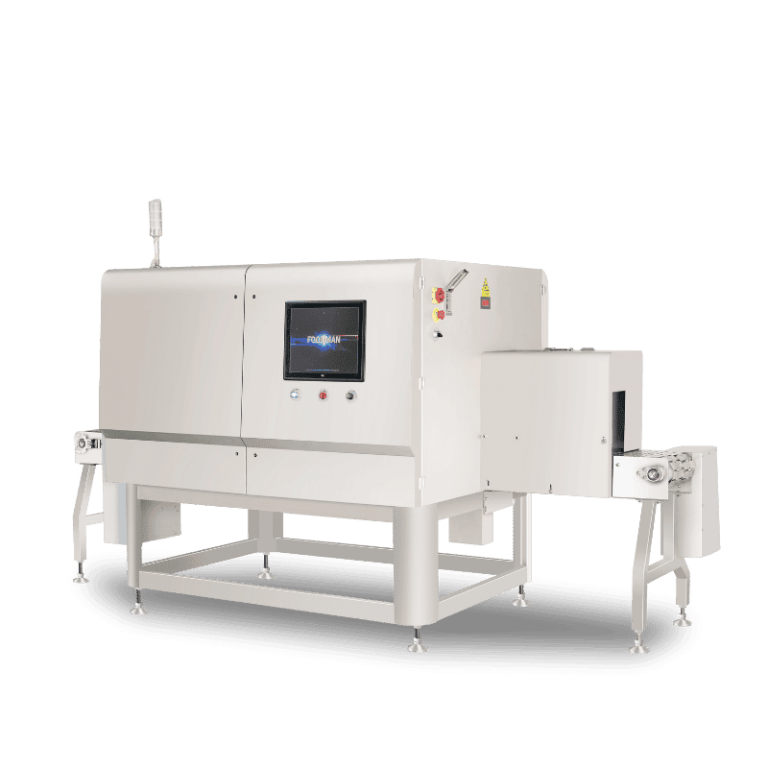Introduction
Growing Demand for Safe and High-Quality Cosmetic Products
In today’s beauty industry, consumer expectations for product safety and quality are higher than ever. Customers not only care about how a product performs but also demand assurance that it is free from contaminants and safely packaged. As global cosmetic markets grow, manufacturers must invest in advanced technologies to meet regulatory standards and build consumer trust. Among these, X-Ray inspection has emerged as a powerful solution to maintain safety without compromising efficiency.
While originally associated with the food industry, X-Ray inspection systems are increasingly used in cosmetic manufacturing to detect physical contaminants and verify packaging integrity. These systems are adaptable and capable of inspecting a wide variety of cosmetic products, from creams and powders to serums and packaged kits.
Importance of Contaminant Detection and Packaging Integrity in Cosmetics
Contaminants such as glass shards, metal particles, or hard plastics can enter cosmetic products during processing or packaging. In addition, packaging failures—such as broken caps, cracked containers, or poorly sealed tubes—can lead to leakage, contamination, or spoilage. To avoid product recalls and protect brand reputation, it’s crucial to ensure both product purity and packaging integrity.
X-Ray inspection equipment provides a non-destructive and highly reliable method for detecting foreign objects inside finished products, even when they are sealed in opaque or multi-material containers. Unlike traditional methods, X-Ray inspection machines can inspect through aluminum, plastic, and glass to identify issues before products reach store shelves. This makes them ideal for cosmetics packaged in compact powders, glass dropper bottles, or plastic tubes.
Role of X-Ray Inspection Systems in Modern Cosmetic Manufacturing
As production lines become faster and more automated, X-Ray inspection systems play a vital role in maintaining consistent quality across high-volume output. These systems offer real-time analysis, automatically removing defective products from the line. With adjustable sensitivity, modern X-Ray inspection machines can detect even small, dense fragments hidden in creams, liquids, or powders—without affecting throughput or product quality.
Leading cosmetic brands rely on X-Ray inspection equipment not only for regulatory compliance but also as part of their brand promise to consumers. Whether it’s ensuring that a moisturizer is free from impurities or verifying that a lipstick tube is fully sealed, X-Ray inspection delivers the confidence manufacturers need in a highly competitive market.
Common Contaminants and Defects in Cosmetic Production
Metal Fragments from Filling or Capping Machines
During high-speed cosmetic production, metal fragments can be unintentionally introduced into products through equipment wear, especially from filling nozzles or capping machines. These fragments pose a serious safety risk and are nearly impossible to detect visually—particularly in opaque creams or lotions. Fortunately, X-Ray inspection systems are capable of identifying even the smallest metal contaminants by analyzing density differences within the product. Unlike traditional metal detectors, an X-Ray inspection machine can detect stainless steel or non-ferrous metal fragments even when they are embedded in viscous or solid formulations.
Glass Shards in Bottled Products
Glass bottles are widely used for perfumes, serums, and essential oils due to their premium feel and chemical resistance. However, the use of glass increases the risk of glass shard contamination, especially during filling or sealing. These tiny glass pieces can lead to injuries or serious health issues. X-Ray inspection equipment offers an effective way to detect such hazards. Thanks to its high-resolution imaging and ability to penetrate glass containers, an X-Ray inspection system can detect internal glass shards without opening the product or slowing down the production line.
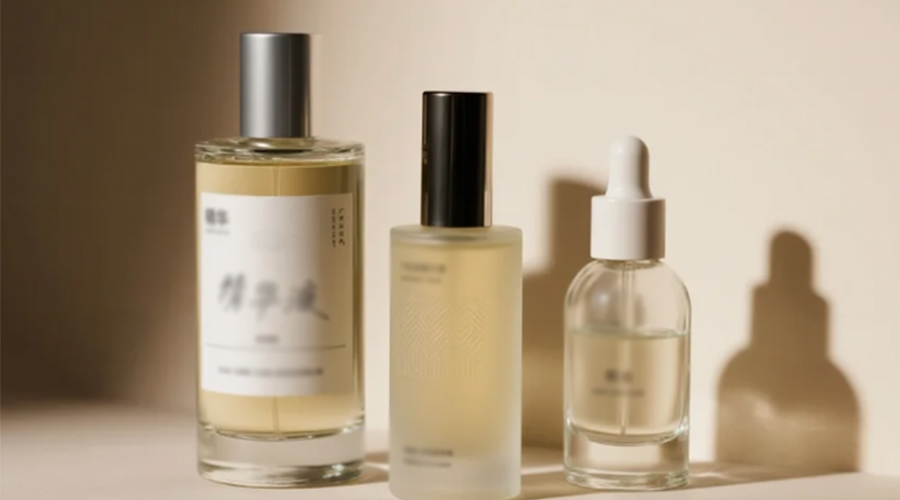
Plastic or Rubber Particles from Processing Equipment
Plastic and rubber particles may come from worn-out machine parts, gaskets, or conveyor systems. These contaminants are especially hard to identify when mixed into creams, pastes, or powders. Advanced X-Ray inspection machines are capable of detecting dense plastic or rubber particles based on their relative density—even when traditional visual or metal detection methods fail. Cosmetic manufacturers rely on X-Ray inspection systems to maintain product integrity and consumer safety by catching these invisible threats during final inspection.
Leaky Tubes, Broken Seals, or Improperly Filled Containers
Beyond physical contaminants, packaging defects are another critical concern in the cosmetic industry. Leaky tubes, cracked jars, or underfilled bottles not only affect product quality but also damage brand image. X-Ray inspection equipment plays a dual role by also inspecting packaging integrity. An X-Ray inspection system can detect air gaps, missing seals, and structural inconsistencies that indicate packaging issues. By integrating X-Ray inspection machines into the final packaging stage, manufacturers can prevent defective units from reaching the market, ensuring a high standard of quality and customer satisfaction.
Challenges in Inspecting Cosmetic Products
Opaque and Dense Packaging
One of the primary challenges in the cosmetic industry is the widespread use of dense and opaque packaging. Products like mascara in black tubes, serums in frosted glass bottles, and lotions in multilayered tubes all pose significant obstacles for traditional inspection methods. Visual inspection and even some conventional detection technologies often fail to identify internal contaminants. However, X-Ray inspection systems overcome this by analyzing product and container density. An advanced X-Ray inspection machine can penetrate even thick and non-transparent packaging materials, allowing manufacturers to detect foreign bodies hidden within without opening the product. This makes X-Ray inspection equipment an essential tool for modern cosmetic production.
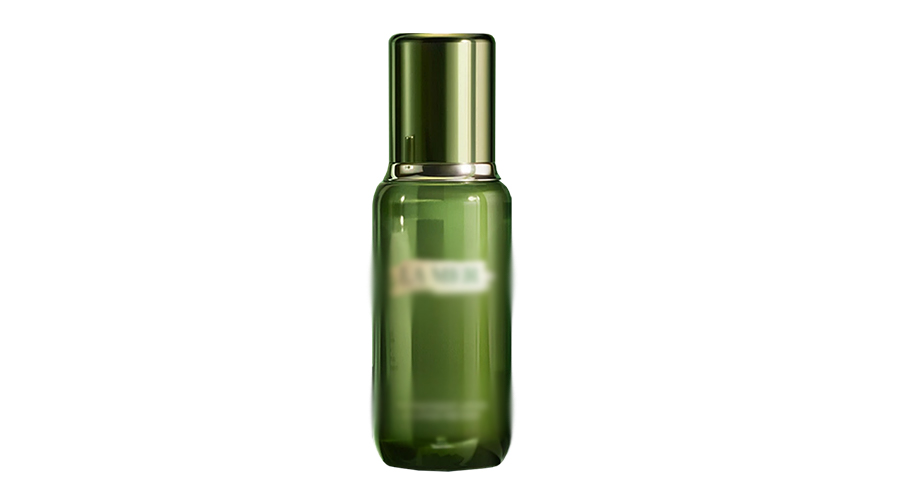
Variability in Product Viscosity and Texture
Cosmetic products come in a wide variety of forms—creams, powders, gels, balms, and pastes—all with different viscosities and textures. These variations can affect how the product interacts with inspection technologies. For example, air pockets in whipped creams or layering in dual-phase serums may produce false readings or obscure contaminants. Fortunately, X-Ray inspection machines use high-resolution imaging and density-based detection, which is less impacted by such variability. A properly configured X-Ray inspection system can distinguish between natural texture inconsistencies and actual foreign materials, ensuring reliable quality control across diverse product types.
Need for Non-Destructive and Gentle Inspection for Sensitive Items
Cosmetic products are often fragile or sensitive—think of glass perfume bottles, delicate emulsions, or high-end skincare items. Any inspection process must be non-destructive and gentle to preserve both the product and its packaging. X-Ray inspection equipment is perfectly suited for this task. Unlike manual or invasive methods, an X-Ray inspection machine scans each product without physical contact, applying only a minimal dose of radiation that poses no harm to the contents. This makes X-Ray inspection systems ideal for maintaining product integrity while still ensuring a high level of safety and compliance.
How High-Precision X-Ray Inspection Systems Work
Density-Based Detection: How X-Ray Identifies Anomalies
High-precision X-Ray inspection systems operate on the principle of density-based detection. Unlike optical or metal detection methods, which rely on surface visibility or magnetic properties, X-Ray inspection equipment can detect foreign materials based on differences in density. Whether it’s a metal shaving from a capping machine or a glass splinter in a serum bottle, a modern X-Ray inspection machine creates a grayscale image based on how much radiation is absorbed by the product and packaging. Any anomaly—such as a denser object embedded in a cream—stands out clearly, enabling manufacturers to catch contaminants that would otherwise go unnoticed.
Dual-Energy and Adaptive Contrast Imaging for Complex Materials
Today’s cosmetic packaging is more diverse than ever, ranging from multilayer tubes to decorative glass and metallic films. These materials can interfere with standard imaging. However, advanced X-Ray inspection systems overcome this through dual-energy imaging and adaptive contrast technology. Dual-energy X-Ray inspection machines capture two sets of images at different energy levels, allowing the system to differentiate between materials like glass, plastic, and metal. Meanwhile, adaptive contrast algorithms adjust in real time to enhance visibility across varying textures and densities. This level of precision makes high-end X-Ray inspection equipment ideal for inspecting complex cosmetic products without false positives or missed defects.
Real-Time Inspection and Automatic Rejection Mechanisms
Speed is essential in cosmetic manufacturing, especially for high-throughput production lines. High-precision X-Ray inspection machines offer real-time scanning capabilities that don’t slow down production. As each product passes through the X-Ray inspection system, it is instantly imaged, analyzed, and—if necessary—rejected automatically. These systems can be integrated with automated ejectors that remove only defective items, minimizing waste and maximizing efficiency. With comprehensive data logging features, modern X-Ray inspection equipment also supports traceability and quality audits, making it an indispensable part of a robust cosmetic quality assurance process.
Applications in the Cosmetic Industry
Liquid and Cream Products: Foundations, Lotions, Serums
In cosmetic production, liquid and cream-based products like foundations, moisturizers, and serums require strict quality control due to their packaging in opaque containers such as tubes or glass bottles. X-Ray inspection systems are especially valuable here, as they can detect foreign objects and packaging defects without needing visual access. Whether using pump bottles or jars, X-Ray inspection equipment ensures that contaminants like metal shavings or broken glass are identified and removed before reaching the consumer. With their non-destructive nature, X-Ray inspection machines maintain the integrity of sensitive formulations during inspection.
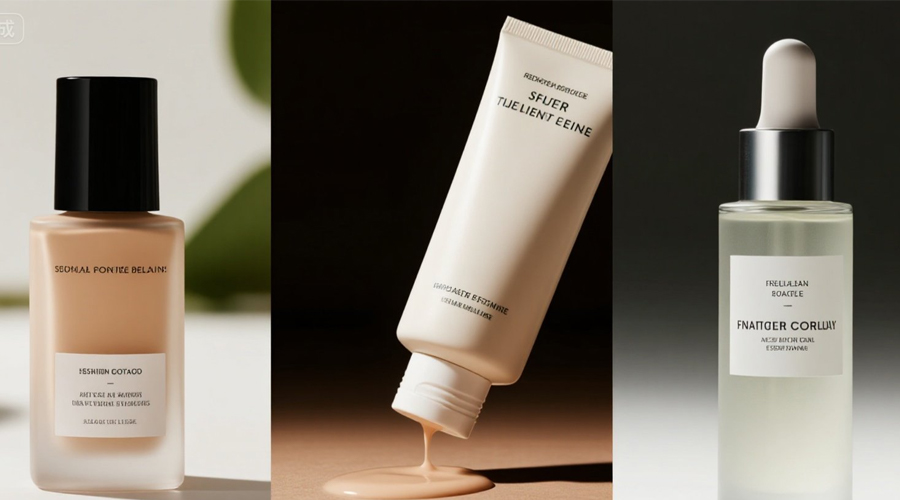
Pressed and Powdered Items: Eyeshadows, Compacts
Pressed cosmetics like eyeshadows, blushes, and powders are prone to contamination during mixing or pressing stages. Foreign particles such as bits of metal or plastic from processing equipment can be inadvertently introduced. Using a high-precision X-Ray inspection machine, manufacturers can scan every compact for density anomalies. Since these products often come in sturdy cases that are difficult to open mid-line, a reliable X-Ray inspection system provides a critical solution for quality assurance without slowing production or compromising packaging.
Aerosols and Pump Containers: Hairsprays, Mists
Aerosols and mist dispensers present unique challenges due to their pressurized nature and metal components. Traditional inspection methods often struggle to safely evaluate the internal contents or detect foreign materials. However, X-Ray inspection machines are designed to handle metal packaging and can distinguish between the can’s structure and any unwanted debris inside. Leading cosmetic manufacturers use X-Ray inspection systems to ensure that pressurized products meet safety standards and are free of contaminants, reducing the risk of consumer complaints or recalls.
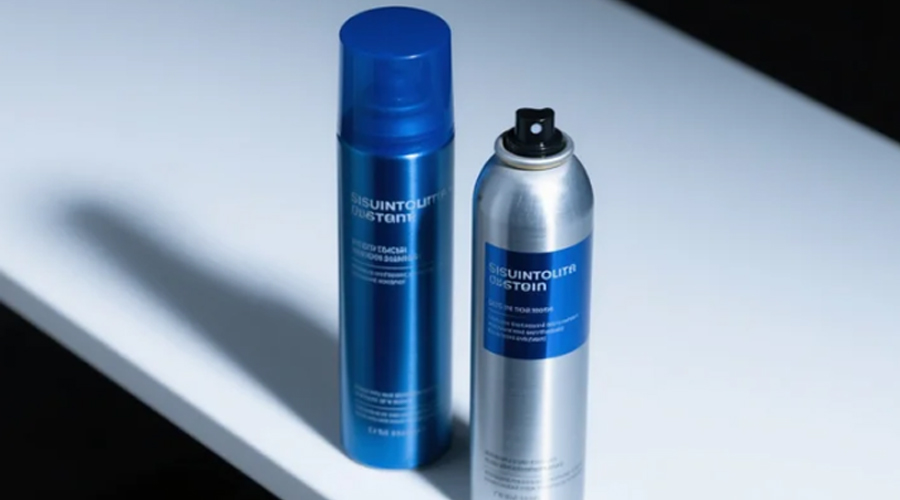
Final Packaging Inspection: Tubes, Jars, Gift Sets
Cosmetic gift sets and final packaged products are often assembled with multiple components—jars, tubes, mirrors, or applicators—which can conceal defects. X-Ray inspection equipment provides a comprehensive scan of these finished goods, ensuring that no broken components, missing items, or foreign materials are present. Whether it’s verifying that a serum tube is sealed correctly or that no glass shards remain in a set packed with a mirror, X-Ray inspection systems help maintain high presentation and safety standards expected in premium cosmetics.
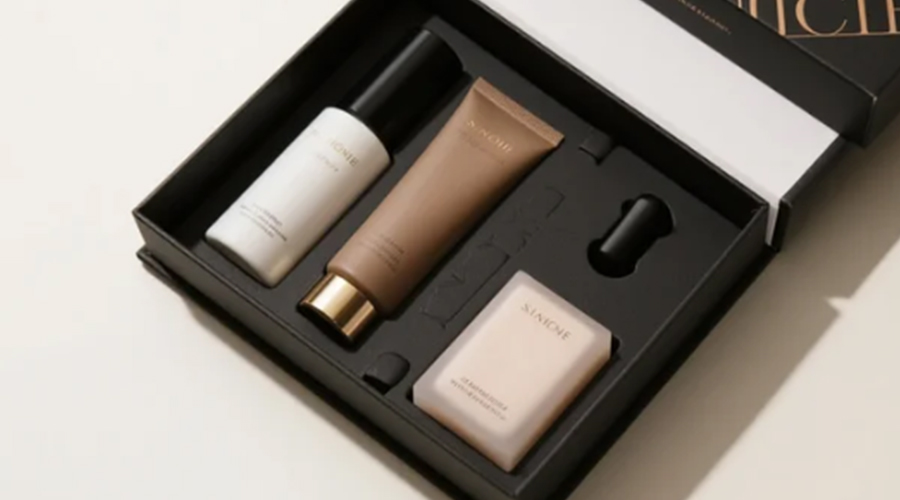
Key Advantages of X-Ray Inspection for Cosmetics
Suitable for Diverse Packaging Formats (Plastic, Glass, Metal)
Modern X-Ray inspection systems are highly versatile, making them ideal for the wide array of packaging used in the cosmetic industry. Whether it’s plastic tubes, glass jars, or metal pump containers, X-Ray inspection equipment can efficiently scan through these materials to detect foreign bodies, cracks, or structural defects. Unlike traditional methods, which may struggle with opaque or reflective packaging, X-Ray inspection machines analyze density variations, allowing for accurate inspection regardless of container type.
Non-Destructive Testing Without Opening Sealed Packages
One of the greatest advantages of using X-Ray inspection in cosmetics is its non-destructive nature. Manufacturers can inspect fully sealed and finished products without compromising their sterility or shelf life. This is particularly beneficial for high-end cosmetic products packaged in vacuum-sealed or airtight formats. X-Ray inspection equipment helps maintain packaging integrity while delivering thorough quality control—ensuring that every item meets safety and quality expectations without ever being opened.
Enhances Product Safety and Brand Reputation
By integrating X-Ray inspection systems into their production lines, cosmetic manufacturers significantly reduce the risk of contaminated or defective products reaching consumers. Whether it’s detecting a shard of glass in a serum bottle or identifying missing components in a gift set, X-Ray inspection machines safeguard not only the end user but also the brand’s reputation. In a market where quality and trust are paramount, having robust X-Ray inspection equipment sends a clear message of commitment to excellence.
Supports GMP Compliance and Regulatory Requirements
Good Manufacturing Practices (GMP) and various international regulations mandate strict quality assurance processes in cosmetic manufacturing. X-Ray inspection technology provides reliable documentation, traceability, and consistent inspection performance that align with these standards. Equipped with data logging and automatic rejection features, modern X-Ray inspection machines help manufacturers demonstrate compliance with regulatory expectations. Implementing a validated X-Ray inspection system ensures that quality checks are both efficient and auditable.
Choosing the Right X-Ray Inspection System for Cosmetics
Factors to Consider: Product Type, Packaging, Line Speed
Selecting the appropriate X-Ray inspection system for cosmetic manufacturing requires careful evaluation of several key factors. The type of product—whether it’s a viscous serum, pressed powder, or aerosol—impacts how X-Ray inspection equipment must be configured. Similarly, the packaging format (e.g., glass bottles, plastic tubes, metal tins) can influence imaging accuracy. High-speed production lines demand an X-Ray inspection machine that can deliver rapid, real-time analysis without sacrificing detection sensitivity. Matching the machine’s capabilities with the production environment ensures seamless integration and optimal inspection results.
Importance of System Calibration and Validation for Cosmetic Applications
To ensure reliable performance, every X-Ray inspection machine used in cosmetics must undergo thorough calibration and validation. Cosmetic products vary widely in density, texture, and container opacity, which means X-Ray inspection systems must be precisely tuned to distinguish between benign material inconsistencies and true foreign bodies. Regular validation processes using reference samples help maintain consistent performance and verify that the X-Ray inspection equipment meets regulatory and internal quality standards. Proper calibration also reduces false positives, saving time and minimizing waste.
Working with X-Ray Equipment Providers for Customized Solutions
Choosing the right X-Ray inspection system goes beyond technical specifications—it also involves collaboration with experienced X-Ray inspection equipment providers. These partners offer tailored solutions that meet the unique demands of cosmetic production lines, including customizable presets, software adjustments, and mechanical adaptations. Whether it’s modifying an X-Ray inspection machine for use with highly reflective packaging or adjusting algorithms for dual-phase liquid formulas, working with the right provider ensures that your inspection process is both effective and future-proof.
Conclusion
X-Ray Inspection as a Cornerstone of Cosmetic Safety and Quality Assurance
In today’s fast-paced and quality-driven cosmetic industry, X-Ray inspection has become an essential pillar of product safety and brand integrity. From detecting microscopic metal shards to verifying the structural integrity of sealed containers, advanced X-Ray inspection systems offer unmatched precision. Unlike traditional detection tools, X-Ray inspection machines analyze density rather than surface characteristics, making them ideal for inspecting a wide variety of cosmetic packaging formats and product types. As regulatory requirements tighten and consumer expectations rise, implementing reliable X-Ray inspection equipment is no longer optional—it’s critical.
Future Trends: AI, Automation, and Smarter Cosmetic Inspection Systems
The future of X-Ray inspection systems lies in intelligent automation. AI-powered detection algorithms are already transforming how X-Ray inspection equipment adapts to complex packaging materials and variable product textures. Emerging systems can auto-calibrate, self-diagnose faults, and integrate seamlessly with production line data analytics platforms. As X-Ray inspection machines become smarter and more connected, cosmetic manufacturers will gain deeper insights into process control and defect trends, ultimately leading to higher efficiency and more consistent product quality.
Final Thoughts: Protecting Consumers and Brands Through Technology
Cosmetic products come into direct contact with consumers, and any defect—whether physical or aesthetic—can impact trust and reputation. By integrating cutting-edge X-Ray inspection equipment into their operations, manufacturers demonstrate a strong commitment to both safety and innovation. A robust X-Ray inspection system not only protects consumers from harm but also shields brands from costly recalls and regulatory non-compliance. In an industry where trust and appearance are everything, investing in the right X-Ray inspection machine is a strategic move toward long-term success.
FAQ
Q: What types of contaminants can X-Ray inspection detect in cosmetic products?
A: X-Ray inspection systems can detect metal fragments, glass shards, dense plastic, rubber particles, and other foreign bodies that may enter during processing or packaging.
Q: Is X-Ray inspection safe for cosmetics like creams, powders, and serums?
A: Yes. X-Ray inspection is non-destructive and does not alter the chemical composition or texture of cosmetic products.
Q: Can X-Ray inspection machines inspect through opaque packaging?
A: Absolutely. High-precision X-Ray inspection equipment can scan through plastic tubes, glass bottles, and metal containers using density-based detection.

